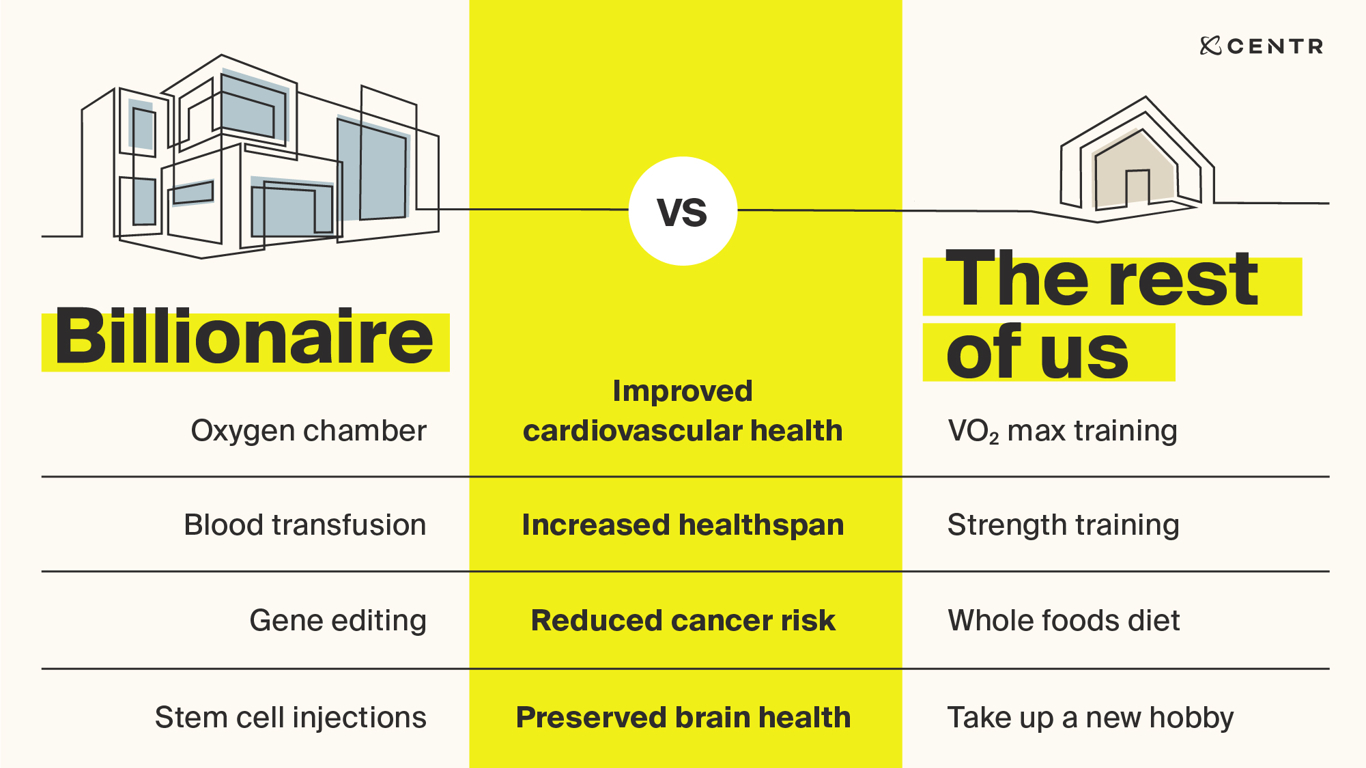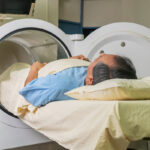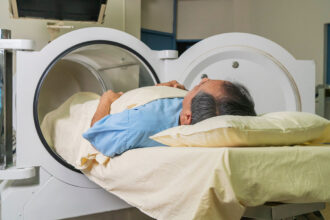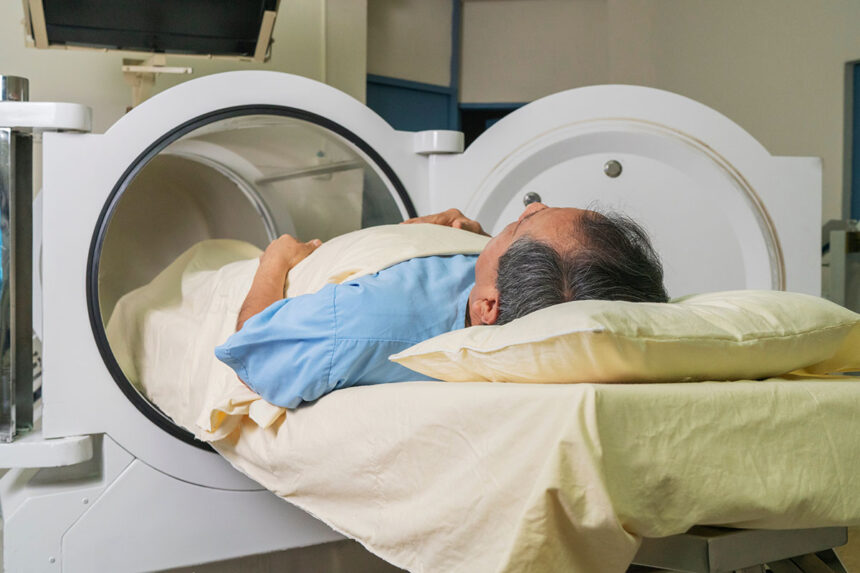Biohacking, the art and science of optimizing the body and mind through deliberate lifestyle, dietary, and technological interventions, has gained significant traction in recent years. From intermittent fasting to implantable tech, biohacking offers endless possibilities for personal improvement. However, its growing popularity has also led to a proliferation of myths and misconceptions that can deter newcomers or create unrealistic expectations.
Biohacking isn’t about doing something extreme—it’s about understanding your biology and making small, informed changes for big results.
Dave Asprey, founder of Bulletproof and biohacking pioneer:
In this blog, we’ll explore and debunk some of the most common myths about biohacking, shedding light on what it truly entails.
Myth 1: Biohacking Offers a One-Size-Fits-All Solution
The Truth: Biohacking is highly personalized and varies based on individual biology, goals, and lifestyle.
Many people assume that there’s a universal biohacking protocol that works for everyone. This couldn’t be further from the truth. As detailed in a The Guardian article, tech entrepreneur Serge Faguet spent $250,000 on biohacking interventions to enhance his health and potentially live forever. However, even with such extensive measures, the results are not guaranteed to be the same for everyone.

Biohacking often requires self-experimentation and adaptation. What works for one person—such as a ketogenic diet or specific supplements—may not work for another due to genetic, lifestyle, or environmental differences.
Myth 2: Biohacking Is Only for the Wealthy
The Truth: Many effective biohacking practices are inexpensive or even free.
Serge Faguet’s high-profile spending on advanced therapies and medical tests has fueled the myth that biohacking is exclusive to the wealthy. While certain interventions, such as stem cell therapy or genetic testing, can be costly, many impactful biohacks are accessible to people across all income levels.
Affordable techniques include:
- Intermittent fasting: Requires no financial investment.
- Cold exposure: Cold showers or ice baths are low-cost and highly effective.
- Mindfulness practices: Meditation and breathing exercises are free and offer profound mental and physical benefits.
Biohacking doesn’t have to break the bank. Starting small with simple, low-cost practices is often the best way to begin.
Myth 3: Biohacking Is Dangerous
The Truth: When approached responsibly, biohacking is safe and evidence-based.
The term “biohacking” often evokes images of extreme or invasive practices, such as implanting RFID chips or self-administering untested drugs. While some fringe biohackers take these risks, the majority of biohacking practices are grounded in science and safety.

For example:
- Nutrigenomics, which tailors diet based on genetic data, is supported by extensive research.
- Techniques like red light therapy and fasting are backed by clinical studies demonstrating their efficacy.
The key to safe biohacking is to rely on evidence-based methods and consult professionals for guidance, especially for advanced or experimental interventions.
Myth 4: Biohacking Guarantees Results
The Truth: Biohacking can enhance health and performance, but results are not immediate or guaranteed.
Some people approach biohacking with the expectation of rapid, dramatic results. While biohacking can produce noticeable benefits, such as improved energy levels or better focus, these outcomes vary from person to person. Factors like consistency, individual biology, and the specific techniques used all play a role.
As noted in The Guardian’s piece on Serge Faguet, even with significant financial investment and advanced interventions, outcomes depend on personal circumstances and genetics. Biohacking is a long-term journey, not a quick fix.
Myth 5: Biohacking Is Only for Tech-Savvy Individuals
The Truth: Biohacking is accessible to everyone, regardless of technical expertise.
While some biohacking methods involve technology, such as wearable devices or implantable chips, the majority of practices don’t require technical knowledge. Everyday biohacks like improving sleep hygiene, optimizing diet, or practicing mindfulness are accessible to anyone with a willingness to learn and experiment.
Biohacking is not a shortcut—it’s a long-term approach to taking responsibility for your health and performance.
Serge Faguet, tech entrepreneur and biohacker
Even wearable technology, such as fitness trackers, has become user-friendly and affordable, making it easy for beginners to track progress and refine their routines.
Myth 6: Biohacking Is a Modern Concept
The Truth: The roots of biohacking date back centuries.
Biohacking may seem like a modern phenomenon, but humans have been experimenting with ways to optimize health and performance for centuries. Practices like herbal medicine, fasting, and mindfulness have been used for millennia to improve physical and mental well-being.
What sets modern biohacking apart is the integration of science and technology. Tools like genetic testing and data-driven wearables have taken traditional methods to new heights, enabling more precise and effective interventions.
Myth 7: All Biohacks Require Scientific Proof
The Truth: While evidence-based practices are ideal, some biohacks are guided by personal experimentation.
Biohacking is as much an art as it is a science. While many techniques, such as intermittent fasting and red light therapy, are backed by research, others rely on individual experimentation. For example, some people find that specific diets, sleep patterns, or supplements work for them even without extensive scientific validation.

Personal experimentation, combined with tracking and adjusting based on results, is a hallmark of biohacking. The key is to approach new methods cautiously and document outcomes to determine what works best.
Final Thoughts
Biohacking is a versatile and evolving field that offers tools to improve health, performance, and longevity. However, separating fact from fiction is crucial to understanding its potential and limitations.
By debunking common myths, we can foster a more accurate and balanced view of biohacking—one that empowers individuals to take control of their biology responsibly and effectively. Whether you’re a beginner or an experienced biohacker, the journey is about experimenting, learning, and growing with practices that align with your unique needs and goals.
Ready to take your first step in biohacking? Start small, stay curious, and let science guide you toward a healthier, optimized life.
Recent Insights Debunking Myths About Biohacking
“Biohacking Is Not One-Size-Fits-All”
A 2024 analysis emphasized that biohacking is deeply personal, as individual responses vary based on genetics, lifestyle, and health goals. While popular practices like intermittent fasting or cold showers work for some, they may not suit others. The study highlighted the importance of tailoring biohacking strategies to unique needs rather than adopting generalized approaches.
Read the full analysis here.
“Biohacking Doesn’t Have to Be Expensive”
A recent 2023 report debunked the myth that biohacking requires costly gadgets or supplements. Many impactful biohacks, such as intermittent fasting, mindfulness, and bodyweight exercises, are either free or highly affordable. The study encouraged beginners to start with simple, budget-friendly practices before exploring advanced interventions.
Discover the detailed findings here.
“Biohacking Isn’t About Quick Fixes”
Another common misconception is that biohacking delivers instant results. A 2024 review emphasized that biohacking is a gradual process requiring consistency and long-term commitment. While some changes, like improved focus or energy, may be noticeable quickly, most biohacks take time to yield sustainable benefits.
Learn more about the research here.
“Biohacking Is Not Just for Scientists or Tech Experts”
Biohacking is often seen as exclusive to experts or tech-savvy individuals. However, a 2023 study highlighted how anyone can engage in biohacking by making informed choices, such as improving sleep hygiene, optimizing nutrition, or incorporating mindfulness. The report emphasized the accessibility of biohacking to everyone with proper education and guidance.
Explore the study here.
“Biohacking Doesn’t Have to Be Extreme”
A 2023 analysis examined how media often portrays biohacking as radical or invasive, such as implanting devices. In reality, the majority of biohacks are simple, non-invasive practices like eating a balanced diet, exercising, and managing stress. These foundational techniques are accessible to most people and don’t involve extreme interventions.
Read the detailed insights here.
These insights clarify that biohacking is not about extremes or one-size-fits-all solutions but about personal experimentation, consistency, and accessible practices. By understanding and addressing these myths, individuals can adopt a realistic and effective approach to biohacking. Would you like me to expand on any of these findings?

























